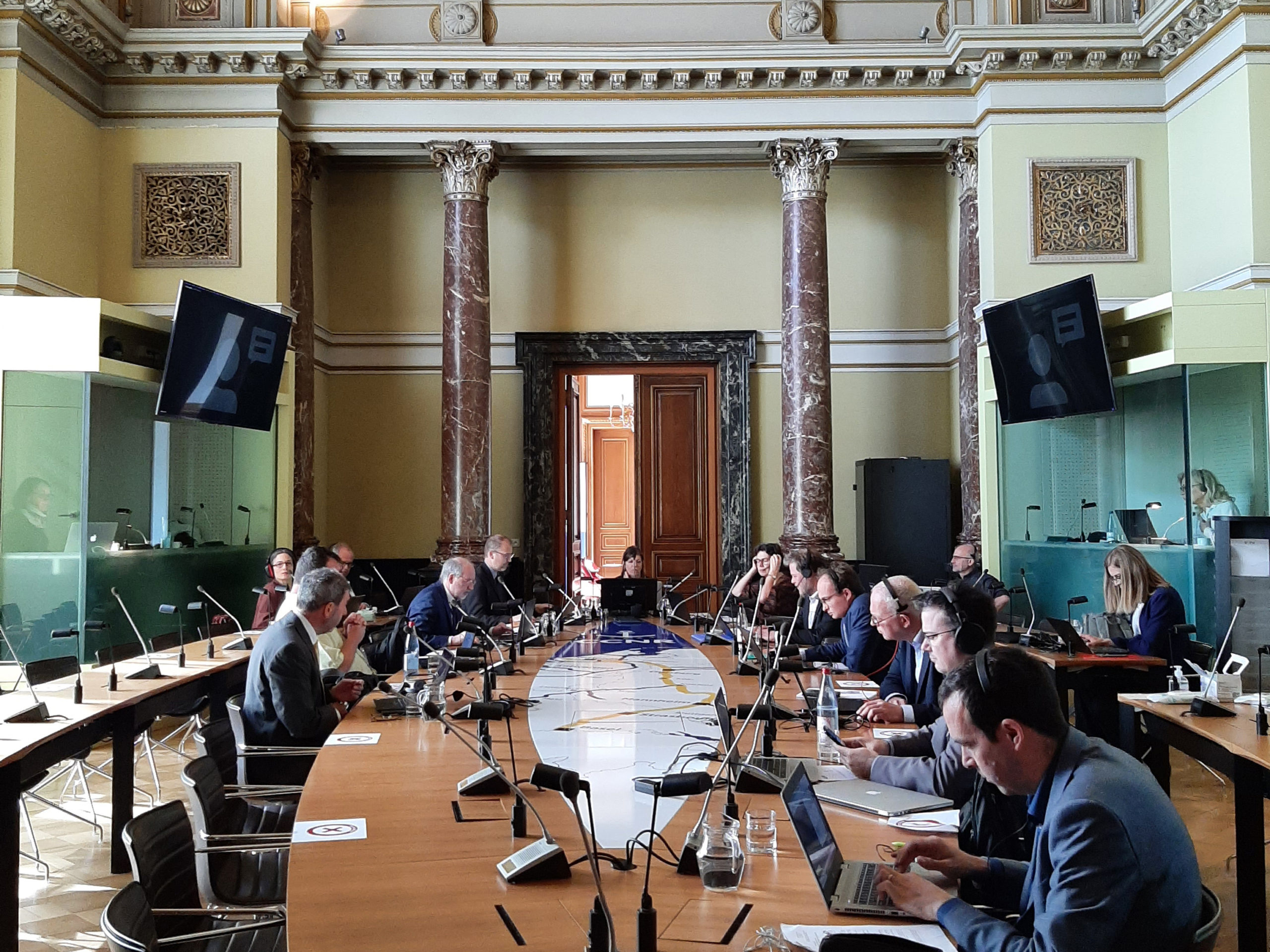CESNI meeting on 12 April 2022
12/04/2022
The European Committee for drawing up Standards in the field of Inland Navigation (CESNI) met on 12 April 2022 to discuss ongoing activities and forthcoming deadlines. Mrs Marleen Coenen, representing Belgium, chaired the hybrid meeting. Among the meeting’s principal outcomes are the adoption of standards and a model in the field of professional qualifications, and the examination of the drafts of ES-TRIN 2023/1 and ES-RIS 2023/1. The updating of the CESNI standards supports the modernisation and greening of the fleet, as well as social and technological developments, while maintaining high inland navigation safety standards. The war in Ukraine and its consequences on inland navigation were also discussed during the meeting. In particular, the assistance to Ukrainian crew members and the handling of Ukrainian certificates of qualification who have expired was addressed.

Source: CESNI
Adoption of standards and a model in the professional qualifications field
The CESNI meeting was the opportunity to adopt standards and a model pertaining to professional qualifications. The CESNI adopted standards for the practical examination for obtaining a certificate of qualification for the operational level. The standards provide an in-depth definition of the specific competencies and situations in which the practical exam will be assessed, in connection with a practical examination for a boatman, able boatman and helmsman. The practical examination can be taken in an appropriate facility ashore or aboard a vessel. The examination bodies may now use the standards adopted at the meeting on 12 April.
The CESNI adopted the model medical certificate for examining medical fitness in the inland navigation sector. Based on part IV of the ES-QIN 2019 (standards for medical fitness), the model owes much to the current model for the “Medical certificate of physical and mental health in the navigation of the Rhine” featuring in the Central Commission for the Navigation of the Rhine’s (CCNR) Regulations for Rhine Navigation Personnel (RPN) The form aims to be clear and unambiguous, both for medical personnel and for the issuing authorities who will be reading it. Approved doctors may now use the adopted model.
Examination of draft standards relating to technical requirements for vessels and river information services
The Committee examined the draft European standard laying down technical requirements for inland navigation vessels, ES-TRIN 2023/1. This new edition of the standard, which aims to supersede the 2021 edition, will introduce important amendments concerning:
- low flashpoint fuels and fuel cells,
- life jackets,
- after-treatment systems,
- waste water collection,
- permanently installed fire-fighting systems for protecting objects,
- passenger vessels,
- recreational craft,
- electric propulsion engines aft of the afterpeak bulkhead,
- repair of engines in service,
- retractable wheelhouses,
- radar navigation installations and rate-of-turn indicators,
- updating of references to the ES-RIS 2023/1,
- special anchors with reduced mass,
- and editorial corrections.
The Committee also examined the second edition of the European standard for river information services, the ES-RIS 2023/1. The principal amendments concern:
- The addition of a new section consolidating and clarifying Inland ECDIS (Electronic Chart Display and Information System for Inland Navigation) operational requirements and performance characteristics.
- The addition of two new types of message transmitted by Inland AIS equipment. AtoN (Aids to Navigation) messages are used to display on the Inland ECDIS screen, in real-time, the position of physical or virtual objects such as buoys, work areas, or areas posing a hazard. ASM messages are another feature enabling supplementary information to be dynamically displayed on the Inland ECDIS, for example water levels, the status of lock navigation lights. ASM also enable craft to relay information ashore, such as estimated time of arrival (ETA).
- The introduction of the XML format (extensible markup language) for most messages in the context of ERI (electronic ship reporting systems in inland navigation).
- The addition of a new message “ERIVOY” to facilitate voyage notification and planning.
- Management of the updating of NtS messages (notices to skippers).
- Editorial improvements and corrections.
The adoption of these new editions of the two standards, the ES-TRIN 2023/1 and the ES-RIS 2023/1, is scheduled for the next meeting of the CESNI in October 2022.
Dedicated workshop on the introduction of electronic documents in inland navigation
The CESNI approved the organisation of a dedicated workshop on the introduction of electronic documents in inland navigation. This cross-cutting workshop concerns the following fields: information technologies, technical requirements for vessels, and professional qualifications.
Presentations showcasing various approaches, including projects derived from other modes of transport, will be scheduled for the workshop. There will also be provision for a discussion session between various actors involved in dematerialisation and coming from the public and private sectors. The principal objectives are to itemise the lessons arising from existing projects and to identify and prioritise the documents and processes where dematerialisation would be of great interest. The workshop is scheduled for 8 September 2022 in Strasbourg.
Other CESNI activities
The calendar of works related to the vessel technical requirements to allow the use of alternatives fuels was presented to the participants of the meeting.
As instructed by the CESNI, the Secretariat also maintains an up-to-date list of engines approved for installation aboard inland navigation vessels (listes.cesni.eu). Several manufacturers have put new Stage V engines on the market, three of them exceeding 1000 kW. Roughly 80 models in all have been type approved in the various power categories. For information, only the competent authorities can lodge a request to add or modify a manufacturer or engine type.
The frequently asked questions (FAQ) document drawn up by CESNI and EUROMOT was updated in November 2021. It is intended to help actors in the IWT sector understand and interpret the provisions applicable to engines in light of the new requirements governing non-road mobile machinery (NRMM) and of the ES-TRIN.
In parallel, the Committee approved a new FAQ document concerning good practices for the administration of crew-related documents, with the addition of numerous frequently asked questions concerning certificate administration and the associated good practices. As a reminder, another FAQ document also contains information on interpreting ES-QIN standards for competences, practical examinations, the approval of simulators, and medical fitness.
The CESNI would also like to highlight the good cooperation with the sector, be it in the field of technical requirements, professional qualifications or information technologies. Worthy of particular mention is the consultation of the profession, which took place online on 14 December 2021 in the context of the work on future European crew-related regulations. Another example of collaboration is the research work on the human factors behind inland navigation accidents.
Participants in the meeting
The Committee meeting involved:
- 11 Member States: Austria, Belgium, Bulgaria, Croatia, Czech Republic, France, Germany. Luxembourg, Netherlands, Poland and Switzerland
- The European Commission, the Central Commission for the Navigation of the Rhine (CCNR), the Danube Commission and the Moselle Commission.
- 8 approved organisations: CEMT, EBA, EDINNA, ETF, GERC, IVR, ESO, EBU
- 2 Observer States: Ukraine and the United Kingdom
Next meeting
The Committee has scheduled its next meeting for 13 October 2022.

